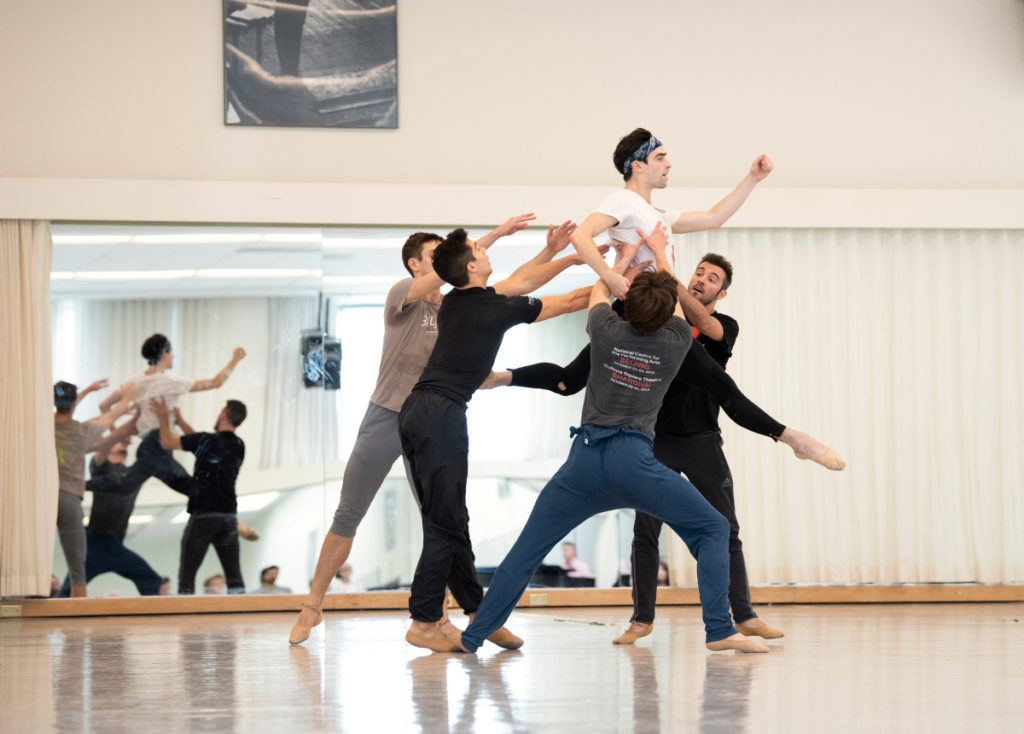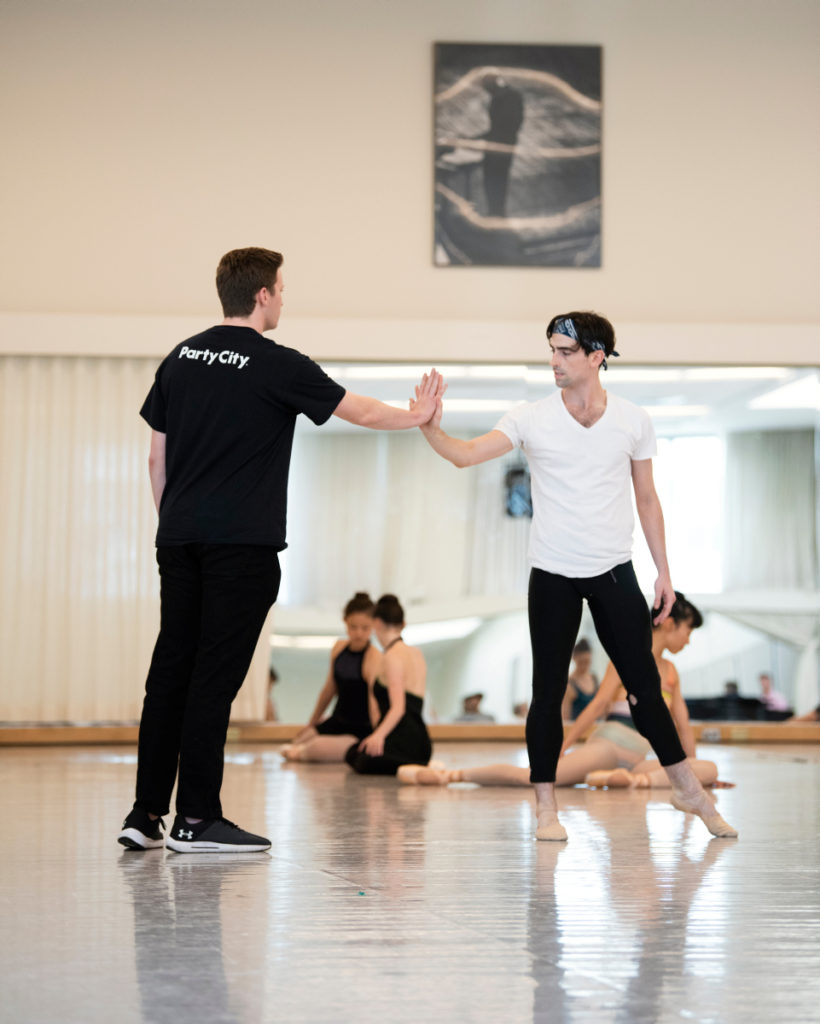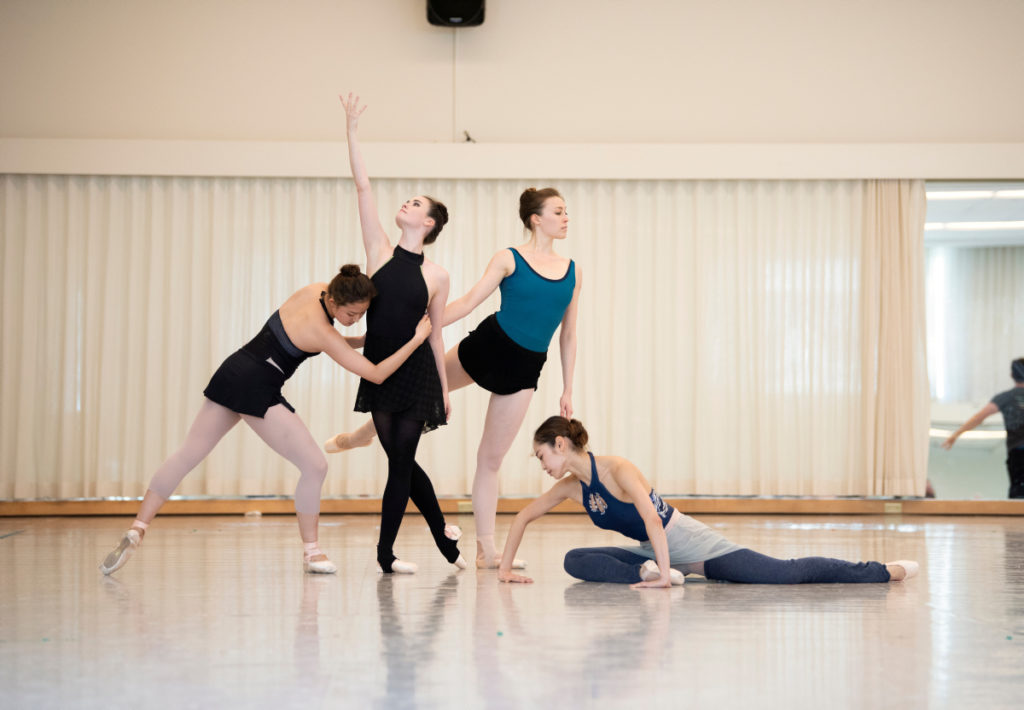About “…two united in a single soul…”
“I think, inside, all men have a side of Narcissus.”
The myth of Narcissus, who falls deeply in love with his own reflection, is the basis of Yuri Possokhov’s new ballet for the 2019 Season. In Greek mythology, Narcissus is a hunter known for his otherworldly beauty. After rejecting the nymph Echo and angering the Greek gods, Narcissus comes upon a forest spring. Captivated by his own reflection, he wastes away, pining for an unattainable love.
It’s a story has inspired artists and writers, philosophers and psychologists for more than 2,000 years. “It’s a beautiful myth,” says Possokhov. “And I think, inside, all men have a side of Narcissus. Actually, I think everyone has some of this—especially ballet dancers.”

Professional dancers spend much of the workday in studios lined with mirrors, and an ongoing pursuit of perfection often leads to a complex relationship with their own reflection. “We all stare at ourselves in the mirror every day for a good portion of our lives,” explains Principal Dancer Joseph Walsh, who dances as Narcissus in Possokhov’s ballet. “You know it can be bad for you, but you keep doing it. Video adds another level to it, and social media. You just constantly see yourself.”
Possokhov himself had a long and successful career as a dancer at San Francisco Ballet, during which he also launched a career in choreography that has taken him around the world. Upon his retirement from the stage in 2006, he was named SF Ballet’s Choreographer in Residence. Possokhov has created more than a dozen ballets for the Company, including Magrittomania, The Rite of Spring, Firebird, and Swimmer. He has been fascinated by the myth of Narcissus for some time, first exploring the idea in a short ballet he workshopped for The Royal Danish Ballet in 2012. “There it was small, like a sketch,” he says. “We make it bigger, with more people and new music here.”
Possokhov’s ballet opens with dancers seated in scattered patterns across the stage, centered behind Narcissus. “I’m multiplying the reflections,” he explains. “It’s like a hall of mirrors.” Even when the dancers start to move, one side of the stage is the mirror image of the other, until a solo for Narcissus shifts the perspective.

Woven into the dance is an onstage countertenor singer, who connects with the character of Narcissus, providing yet another reflection. The music is a newly commissioned score by Daria Novo, a young Russian composer. Her score centers around several Handel arias originally written for castrati (male singers who were castrated so that their voice wouldn’t change by going through puberty). Today these roles are sung by a countertenor, the highest male singing voice, known for having a beautiful and sometimes otherworldly sound.
Novo fuses classical music with modern sounds to create the ballet’s score. “I took original Handel music and integrated it with electronics and my own music,” she explains, “so that it sounds interesting—and still like classical music. I experimented with different audio plug-ins, libraries, and sound effects to create ‘hybrid’ music.”

The contrast between the old and the new in the music is meant to reflect the duality of Narcissus. “My idea was to use a harpsichord as Narcissus’ main instrument in two different ways—acoustic sound from a real harpsichord and processed sound from a keyboard,” explains Novo. “Something real and organic becomes artificial and heartless. Narcissus sees himself in a river and falls in love so deeply that he dies. I tried to use this contrast in music as well.”
Rather than being a step-by-step retelling of the myth, the ballet highlights themes of both connection and reflection, and evokes through movement the gentle currents of a forest stream. Walsh, who has been a part of several of Possokhov’s premieres, enjoys working with his movement vocabulary, which is exhiliratingly challenging, a precise blend of classical and contemporary movement. “The feeling is weighted,” he explains. “With lots of undulation in his more contemporary work.”
Walsh says there’s a freedom in being onstage, away from the studio mirrors. “When you look toward the audience, where you’re used to seeing a reflection, instead it’s just a void. And then you don’t have to deal with yourself looking back and passing judgement.”
From Ovid’s Metamorphoses
“No more my shade deceives me, I perceive
‘Tis I in thee—I love myself—the flame
arises in my breast and burns my heart—
what shall I do? Shall I at once implore?
Or should I linger till my love is sought?
What is it I implore? The thing that I
desire is mine—abundance makes me poor.
Oh, I am tortured by a strange desire
unknown to me before, for I would fain
put off this mortal form; which only means
I wish the object of my love away.
Grief saps my strength, the sands of life are run,
and in my early youth am I cut off;
but death is not my bane—it ends my woe.—
I would not death for this that is my love,
as two united in a single soul
would die as one.”
(translation by Brookes More)
By Caitlin Sims
Header photo: Wei Wang and Joseph Walsh rehearsing Possokhov’s “. . . two united in a single soul . . .” // © Erik Tomasson








